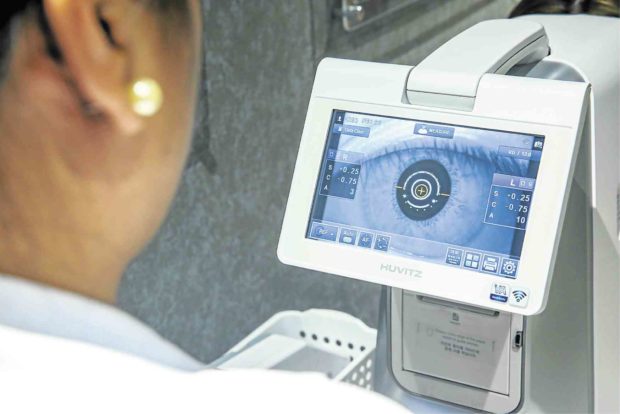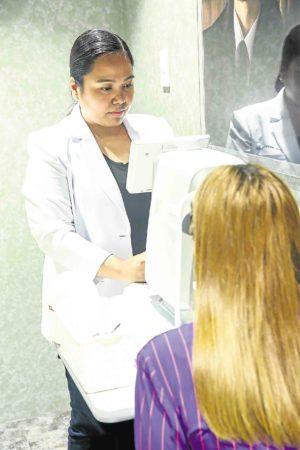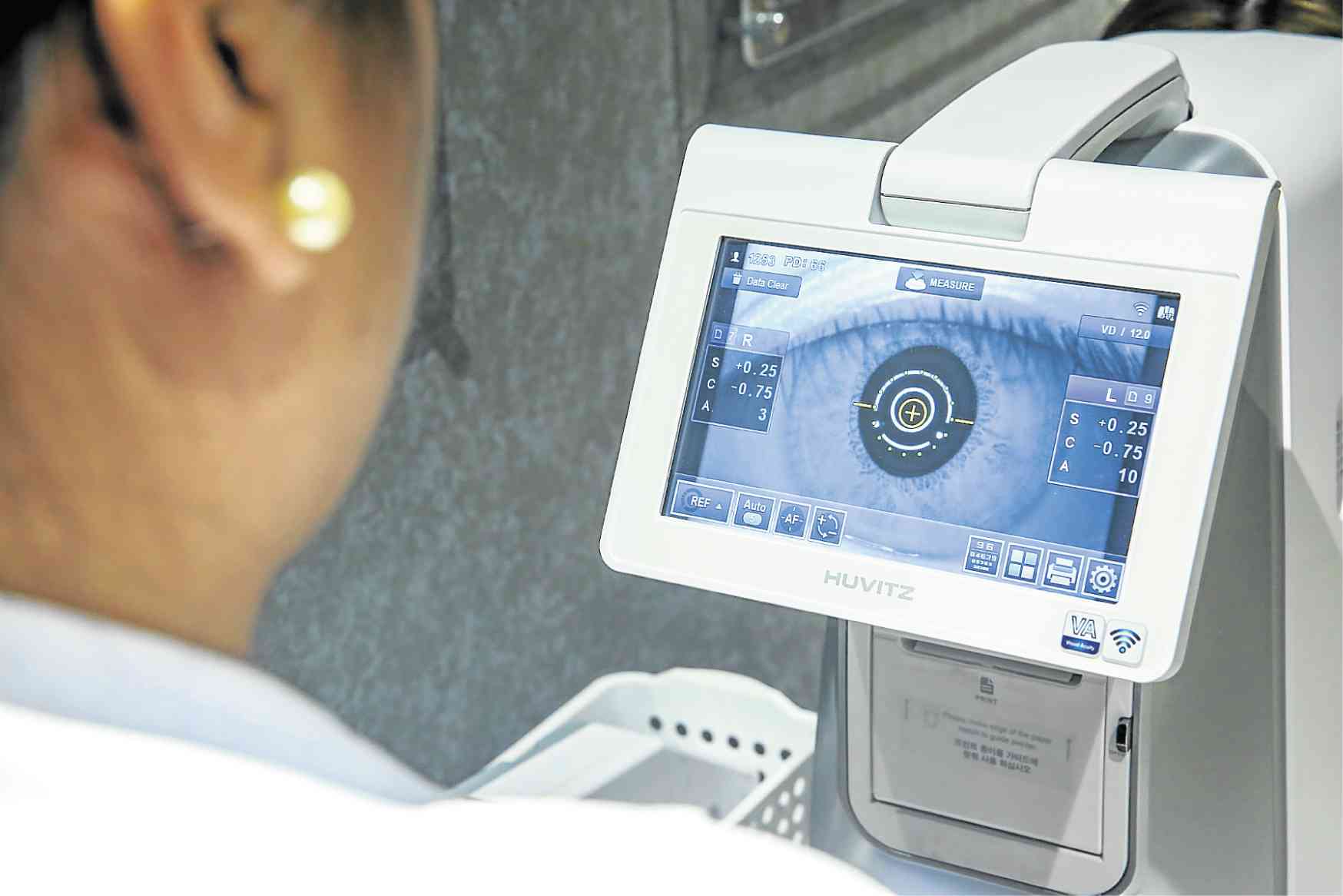
 You can zap your wrinkles, lift your sagging chin, even take tons of supplements to boost your energy and belie your age. Yet, when you have to move your mobile phone or that paper farther away to read it, or have to take off your eyeglasses to look at near objects, or—god forbid!—put on reading glasses at the tip of your nose, over your contact lenses, to check your phone, you can deny your true age all you want, but your eyes don’t lie.
You can zap your wrinkles, lift your sagging chin, even take tons of supplements to boost your energy and belie your age. Yet, when you have to move your mobile phone or that paper farther away to read it, or have to take off your eyeglasses to look at near objects, or—god forbid!—put on reading glasses at the tip of your nose, over your contact lenses, to check your phone, you can deny your true age all you want, but your eyes don’t lie.
Presbyopia is an eye condition that afflicts people from age 40 up. It’s a normal loss of focusing ability, and can affect anyone even if one has never had previous vision problems.
“Our eyes work like a camera. They have the ability to zoom in and zoom out to make objects clear,” says Dr. Aileen Azarcon, an optometrist at the Japanese eyewear chain Owndays.
The technical term for the eyes’ ability to adjust focus is called accommodation, she adds. “The eyes’ autofocus ability weakens as we age. The crystalline lens in the eye is responsible for focusing. As we age, it becomes less flexible and hardens, and the muscle that holds it weakens. That’s why we have difficulty reading near.”
Inevitable
Presbyopia is age-, not genetics-related, she explains, and is inevitable.
While most patients exhibit the symptoms as they hit age 40, others suffer a premature onset of those symptoms. At risk are patients with diabetes or cardiovascular disease, on medications that affect the lens of the eyes, or have suffered eye trauma.
Azarcon says studies have also shown that women are most likely to suffer premature presbyopia and begin to lose their eyes’ focusing ability in their late 30s.
Presbyopia, however, can be fixed via laser or regular eye surgery. “But since the procedure is very costly, the most popular solution still are glasses with progressive lenses,” she says.
Do images of geriatric folk in their lined glasses—doble vista or bifocals, they’re called—come to mind at the mention of progressive lenses? Can’t blame you.
But those are a thing of the past, Azarcon says.
New progressive lenses no longer have visible lines and look like regular lenses. They differ from regular lenses since they allow the wearer to view objects at varied distances with a single pair of glasses: far, at the top part of the lens, for distance; intermediate, at the center line, for driving or working on your computer; and near, at the bottom part, for reading.
Premium
Owndays recently launched a premium progressive lens line called Owndays Prestige that has a wider reading area than typical progressive lenses. It’s also cheaper by about half, compared to similar quality lenses. They’re highly customizable for the most comfortable vision.
In the old designs of progressive lenses, the lateral field for reading and driving were limited, so first-time wearers often reported a sense of movement or swaying and distortion as they turned their heads. Premium lenses have improved vision zones, so there’s less peripheral aberration, Azarcon says.
They can also now be made with your choice of frame—it doesn’t have to be big, as was required in the past.

“Eyeglasses aren’t a cure. They are tools or aids to make your vision clear or relieve your headache. Your prescription increases not because you wear glasses, but because of the activity of your eyes—how and how much you use them,” Azarcon says.
And while the onset of presbyopia is inevitable, and also not caused by your use (or overuse) of electronic gadgets, there are exercises to keep eyes healthy, she adds.
There’s the “20-20-20”—after 20 minutes of staring at your computer, rest your eyes for 20 seconds by looking at a distance of 20 feet. This exercise relaxes eye muscles.
Owndays pioneered in the Philippines the concept of all-in-one eyeglasses pricing: meaning, unlike regular optical shops where you pick a frame and you pay its price on top of your lenses, depending on the grade, at Owndays you pay everything according to set prices—from P1,990 to P6,990, no additional fees for ultra thin or aspheric lenses, regardless of the grade.
Regular eyeglasses can also be made in just 20 minutes, while you sip complimentary coffee. Progressive lenses take five-seven days, though you pay extra for the lenses.
Owndays, founded in Tokyo in 2002, is under the Lucerne Group here. It opened its first shop in the Philippines in December 2015 and now has 31 outlets, with a few more opening by yearend.
Any given store has 20 Japan-designed frame brands and about 1,500 styles to choose from, including the Crystal Edition clear frames, a hot trend created exclusively for the Philippine market.









































